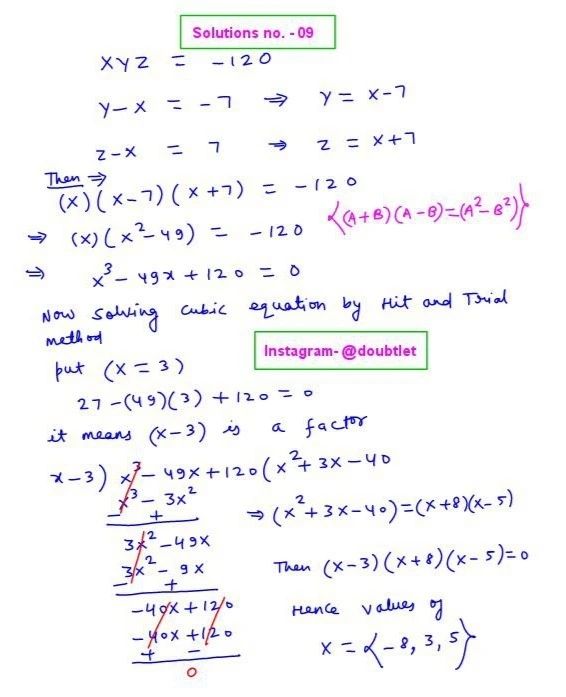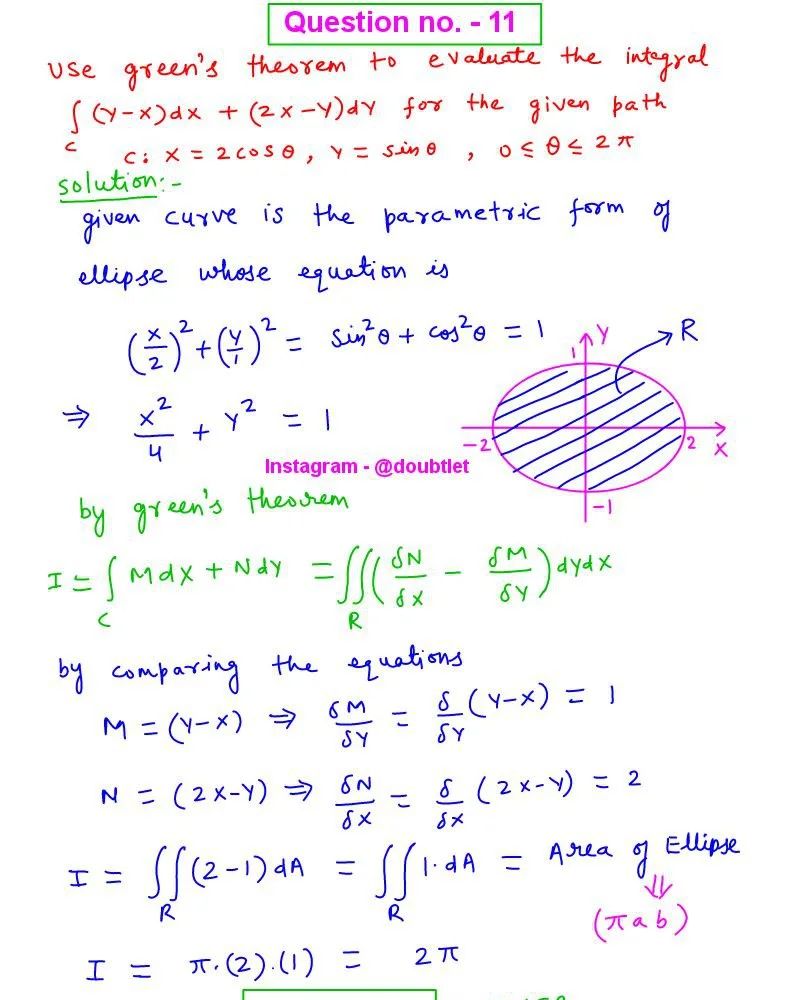









How to Find the Order and Degree of a Differential Equation: A Comprehensive Guide
Learn how to easily determine the order and degree of differential equations with our detailed guide. Understand key concepts, see practical examples, and explore real-world applications to master this essential mathematical skill. Perfect for students, engineers, and math enthusiasts.Differential equations might seem like an abstract concept confined to the pages of math textbooks, but they are a cornerstone of many fields, from engineering to economics. The order and degree of a differential equation are essential concepts that help us understand the nature of these equations. So, let’s break them down into bite-sized pieces and explore their significance in solving differential equations.
A differential equation's order refers to the equation's highest derivative present. Meanwhile, the degree is the power to which this highest derivative is raised, provided the equation is free from fractional powers and roots. These two concepts help categorize differential equations and provide insight into their complexity and the methods required to solve them.

Neetesh Kumar | August 13, 2024
Share this Page on:
![]()
![]()
![]()
![]()
![]()
- 1. Introduction to the Order and Degree of Differential Equation
- 2. What is the Order of Differential Equation
- 3. What is the Degree of Differential Equation
- 4. First order differential equation
- 5. Second order differential equation
- 6. Examples on Order and Degree of Differential Equation
- 7. Practice Questions on Order and Degree of Differential Equation
- 8. FAQs on Order and Degree of Differential Equation
- 9. Real-life application of Order and Degree of Differential Equation
- 10. Conclusion
1. Introduction to the Order and Degree of Differential Equation:
Differential equations describe relationships involving rates of change. These equations are everywhere, whether it's modeling population growth, heat conduction, or electrical circuits. To make sense of these relationships, mathematicians use two key concepts: the order and the degree of a differential equation. Understanding these terms is crucial as they determine our methods to solve the equations and interpret their solutions.
2. What is the Order of a Differential Equation:
The highest derivative in the equation determines the order of a differential equation. For example, in the equation the highest derivative is , which makes it a second-order differential equation. The order gives us an idea of how often the dependent variable is being differentiated and often indicates the complexity of the problem.
3. What is the Degree of a Differential Equation:
The degree of a differential equation is a little trickier. It’s the power of the highest order derivative, but only when the equation is free from fractional powers or roots involving the derivatives. For example, in the equation
the highest derivative is , and since it’s raised to the power of 3, the degree of this equation is 3.
However, if the equation has a term like , the degree is not defined until it's expressed in a polynomial form.
4. First Order Differential Equations:
First-order differential equations are those where the highest derivative is the first derivative. These equations are often encountered in exponential growth or decay situations, such as population models or radioactive decay. A typical example is , which describes a simple exponential decay process. Solving first-order differential equations often involves straightforward methods like separating variables or integrating factors.
5. Second Order Differential Equations:
Second-order differential equations, where the highest derivative is the second derivative, are prevalent in physics, particularly in systems involving acceleration, such as motion under gravity or harmonic oscillators. An example would be . These equations can be more challenging and often require techniques like characteristic equations or Laplace transforms.
6. Examples on Order and Degree of Differential Equation:
Example - 1: Find the order and the degree of the given equation
Solution: The highest derivative is , making it a third-order differential equation. Since there are no fractional powers or roots, the degree is 1.
Example - 1: Find the order and the degree of the given equation
Solution: The highest derivative is , making it a second-order differential equation. Since there are no fractional powers or roots, the degree is 2.
7. Practice Questions on Order and Degree of Differential Equation:
- Identify the order and degree of the equation:
- Determine the order and degree (if defined) of the differential equation:
- For the equation identify the order and degree.
These questions are designed to reinforce your understanding of the concepts discussed and help you become comfortable with identifying the order and degree in various equations.
8. FAQs on Order and Degree of Differential Equation:
Can the degree of a differential equation be a fraction?
No, the degree of a differential equation is always a positive integer, provided the equation is free of fractional powers and roots of the derivatives.
What happens if a differential equation has a non-integer degree?
In such cases, the degree is undefined until the equation is rewritten in a polynomial form.
How do the order and degree of a differential equation affect its solution?
The order dictates the number of arbitrary constants in the general solution, while the degree affects the methods you can use to solve the equation.
Can the order of a differential equation be negative?
No, the order of a differential equation is always a positive integer. A negative order would imply an "inverse" derivative, which doesn't have a meaningful interpretation in standard differential equations. If you encounter something that looks like a negative order, it usually indicates the need for a different mathematical framework, such as integral equations.
What is the difference between a partial differential equation (PDE) and an ordinary differential equation (ODE) in terms of order?
The key difference lies in the type of derivatives involved. In an ODE, the order refers to the highest derivative of a single variable. In a PDE, the order is determined by the highest partial derivative of the function for any of its variables. PDEs and ODEs can have similar definitions of order and degree, but PDEs involve more complex scenarios with multiple variables.
Is it possible for a differential equation to have a fractional order?
No, the order is always a positive integer in classical differential equations. However, in advanced mathematics, particularly in fractional calculus, differential equations can have fractional orders, which describe systems with memory and hereditary properties.
How do nonlinear terms in a differential equation affect the degree?
Nonlinear terms can complicate the determination of the degree. For a nonlinear differential equation, the degree is defined as the power of the highest-order derivative after the equation has been expressed in polynomial form concerning that derivative. If the equation cannot be simplified into such a form, the degree may be considered undefined.
Can a differential equation have a degree of zero?
Yes, a differential equation can have a degree of zero. This occurs when the highest derivative in the equation is raised to the power of zero, essentially making that term disappear. An example would be y = 0, where the degree is 1 (not zero) for the highest order derivative, but in some contexts, equations can be simplified to have no degree terms remaining.
9. Real-Life Application of Order and Degree of Differential Equation:
Differential equations are not just academic exercises; they have real-world applications. Engineers use second-order differential equations to model vibrations in mechanical systems, while economists might use first-order differential equations to model the rate of change in investments over time. The order and degree of these equations help professionals determine the right approach for finding solutions that can predict future behavior or optimize processes.
10. Conclusion:
Understanding the order and degree of differential equations is like learning the grammar of a new language—it’s essential for making sense of the equations and communicating your solutions effectively. Whether you're dealing with first-order equations in economics or second-order equations in physics, knowing how to identify and work with these concepts will make the task less daunting.
If you have any suggestions regarding the improvement of the content of this page, please write to me at My Official Email Address: [email protected]
Are you Stuck on homework, assignments, projects, quizzes, labs, midterms, or exams?
To get connected to our tutors in real time. Sign up and get registered with us.
Linear Algebra Calculators
Matrix Inverse Calculator
Eigenvalue and Eigenvector Calculator
Blog Information
Blog Author: Neetesh Kumar
Blog Publisher: Doubtlet
Comments(0)
Your comment will be reviewed before it is published.



Leave a comment